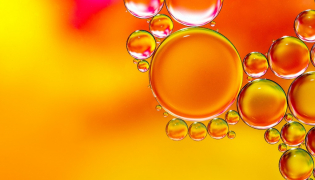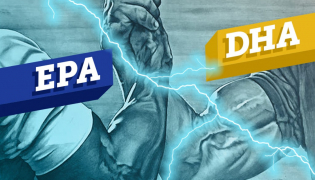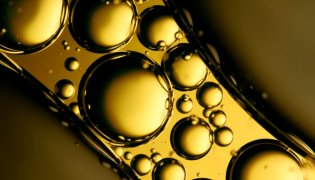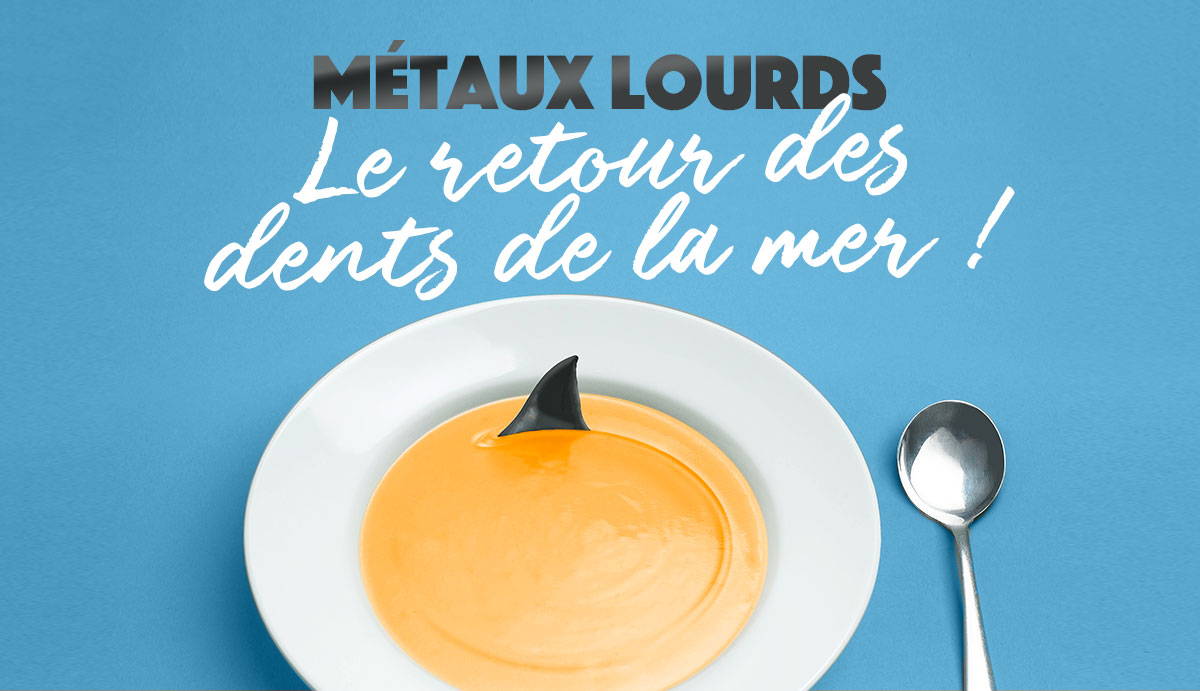
WHAT TO REMEMBER :
- Fish are an important source of Omega 3.
- Large fish contain more heavy metals than small fish.
- Smaller, less polluted fish are to be preferred.
- In terms of Omega 3 intake, supplementation remains the least risky solution.
We know what you're thinking : what is the relationship between heavy metals and sharks ? Get on our submarine, fasten your seat belts, we go down to the depths ! most of the time nature is quite simple, the big ones eat the small ones and so on. Fish are no exception to the rule and the last ones in the chain end up concentrating ugly levels of heavy metals. We are constantly told that we must eat fish to get a certain amount of Omega 3. Maybe it's not for nothing! You know, that pompous term for essential fatty acids! In this logic, is it better to be eaten by a shark or eat shark ? The answer to this question may not be as predictable as you think...
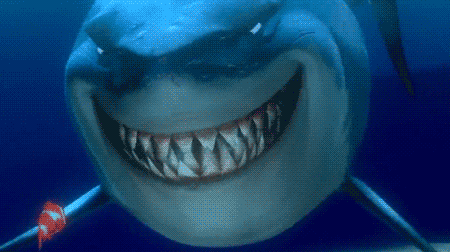
Heavy metals : what are we talking about ?
The definition of heavy metals varies according to the sources but we will agree on it: any metal element with a density greater than 5 grams per cm3. They are not all harmful to health since some in low doses are essential for the proper functioning of our body (zinc, iron, copper nickel...) Others, very toxic, have no beneficial contribution, on the contrary. At the top of the list is an infernal trio : mercury, arsenic and lead.
Let's start with the mercury *, that can be found in all reports on salmon farming. If the media are sounding the alarm, it is not without foundation. Mercury is extremely toxic to the brain and cardiovascular system (1).
* For the sake of simplicity we will talk about mercury throughout the article to refer to its most toxic form : methylmercury.
In second place is Arsenic, which mainly affects water and cereals. Risk areas are concentrated in Asia in rice fields where water and soil are already contaminated. Two main points should be noted on rice :
- A study conducted around the Yangtze River in China shows a high concentration of arsenic in the rice grains collected (2). We must therefore be careful about where our rice comes from, which we feel is too uninformed. We know, it's not easy !
- According to the Center for Food Safety & Applied Nutrition (3), brown rice contains on average 10 times more arsenic than white rice! Other studies have relayed this information (4, 5) by showing that arsenic accumulates in the rind of rice.
In short, for your next Japanese restaurant, exit sashimi and makis, we turn to miso soup!
And finally, we find Lead, which is less and less present thanks to the virtual disappearance of gasoline and lead-based paints. The high toxicity of lead mainly results in a risk of lead poisoning (reduction in cognitive abilities).
Small or big fish, what's the difference ?
I hope you like us in the south, you like sardines !
That's why : to put it simply, heavy metals accumulate throughout the food chain. The larger the fish, the more heavy metal it accumulates in its prey. And who is at the top of this chain ? We of course, and the shark. Our advice : avoid fish at the top of the chain (swordfish, tuna, shark), in favour of small fish at the bottom of the chain (sardine, herring, anchovies, etc.)
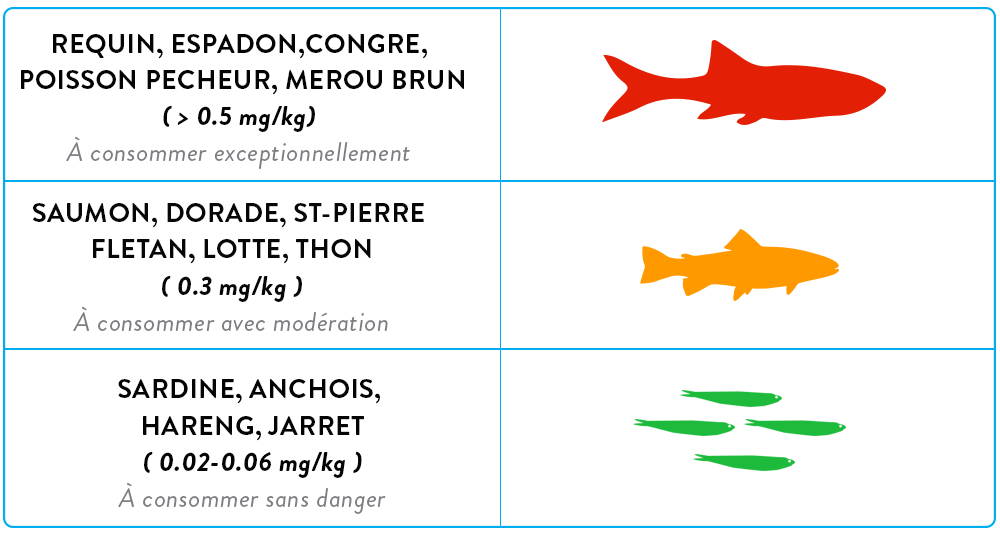
The values correspond to the average mercury content of fish caught in the Mediterranean according to the European Environment Agency (6). It should be noted that the limit set by the European Commission is 0.5 mg/kg of mercury for most fish, and 1 mg/kg for certain predators such as tuna and swordfish (7).
Organic = no heavy metals ?
"This year on Christmas Eve, I bought an organic smoked salmon DONC guaranteed zero heavy metals !"
Organic guarantees a product without pesticides and other toxic compounds present in non-labelled products. But on the heavy metals side, the situation is no longer all rosy ! Where the whole paradox of organic farming lies is that it contains even more heavy metals than conventional salmon... (9). The reason is quite simple: the diet of organic fish consists of animal waste (certainly organic) that is more likely to be contaminated.
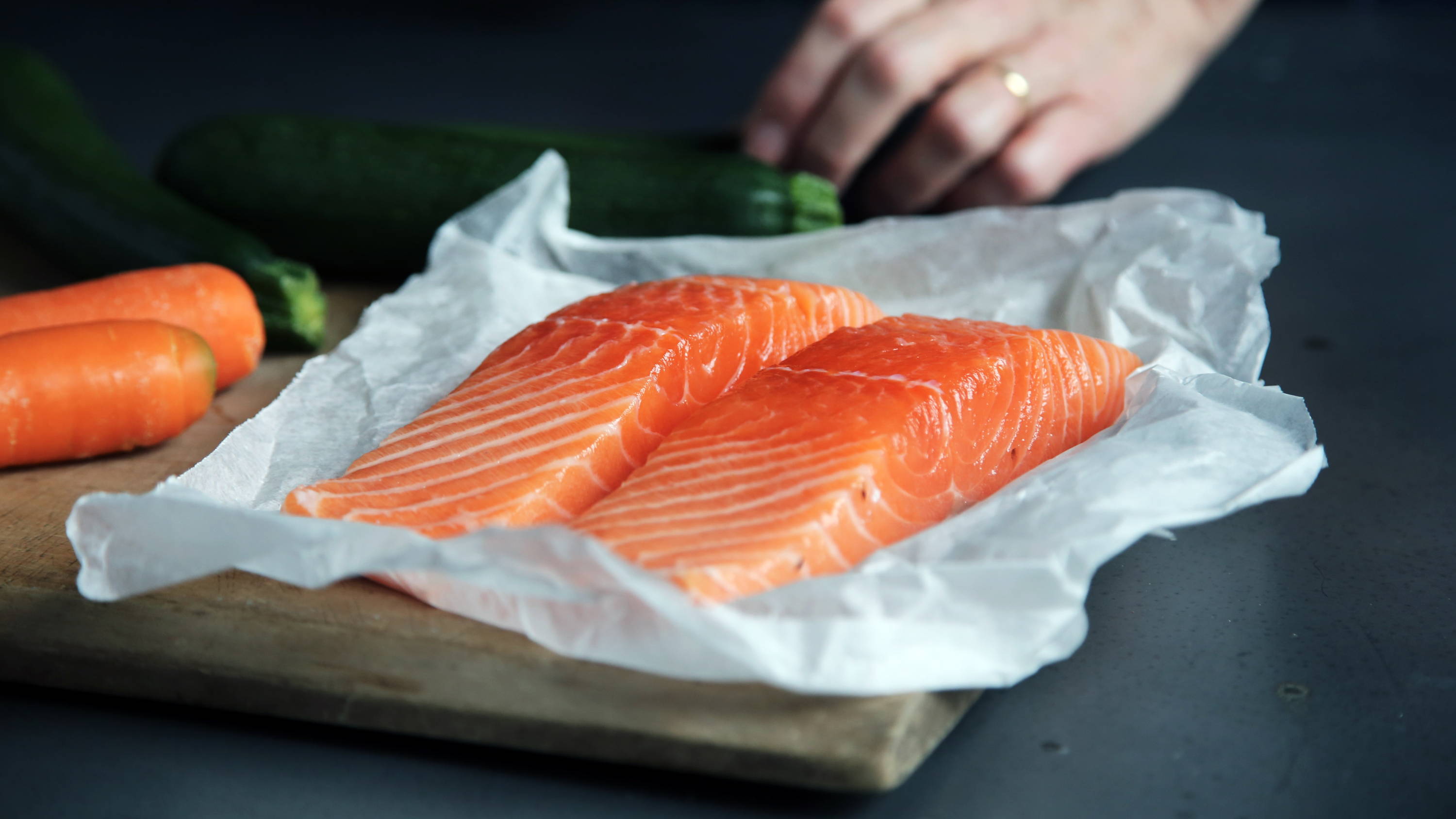
It would be a shame to permanently stop eating salmon (it's still excellent). All you have to do is limit your consumption of large fish to 1 or 2 meals a week. For persons at risk (pregnant women and children under 30 months of age), this limit is 150 g per week according to the ANSES (8).
Did you know that ?
Fish contamination is not only the result of toxic waste dumped by humans. Even wild fish can contain high levels of mercury due to volcanism and heavy metals naturally present in the earth's crust !
 It should be noted that the thresholds established by GOED (Global Organisation for EPA & DHA) are lower than those of the EU. As a reminder, EPA & DHA are the 2 key fatty acids of Omega 3.
It should be noted that the thresholds established by GOED (Global Organisation for EPA & DHA) are lower than those of the EU. As a reminder, EPA & DHA are the 2 key fatty acids of Omega 3.
The team's opinion
As you will have understood, this article is not intended to veganize you or to rebel against the organic labelbut simply to clarify some prejudices about heavy metals. Yes, fish is an interesting source of Omega 3 that the body alone cannot produce in quantity (omega 3 article). But in the face of this, there is the problem of the balance between the essential fatty acids contained in fish and its heavy metal content. If at the end of this article you are still wondering what is best to do, we recommend 2 approaches. It would be a shame to miss the benefits of some of the fish, wouldn't it ? Small fish are then chosen to minimize the amount of heavy metals. In a second step, we advise you nutraceuticals. Does that surprise you ? The reason is simple: the characteristic of lipid extraction is to be able to purify the oils. Thus, the capsules combine the benefits of fish while minimizing its toxicity. Our Omega 3s are actually well below the thresholds set by GOED and the EU0.01 for mercury and 0.02 for lead (see analyses). So it's up to you to choose between these two solutions, the key is to consume intelligently !
(1) Jyrki K. Virtanen, Tiina H. Rissanen, Sari Voutilainen, Tomi-Pekka Tuomainen, (2007,) Mercury as a risk factor for cardiovascular diseases, The Journal of Nutritional Biochemistry, Volume 18, Issue 2,https://doi.org/10.1016/j.jnutbio.2006.05.001
(2) Changping Mao, Yinxian Song, Lingxiao Chen, Junfeng Ji, Jizhou Li, Xuyin Yuan, Zhongfang Yang, Godwin A. Ayoko, Ray L. Frost, Frederick Theiss. (2019). Human health risks of heavy metals in paddy rice based on transfer characteristics of heavy metals from soil to rice, CATENA, Volume 175,Pages 339-348. https://doi.org/10.1016/j.catena.2018.12.029.
(3) Center for Food Safety and Applied Nutrition. (2014). Arsenic in Rice and Rice Products: Risk Assessment Report. https://www.fda.gov/files/food/published/Arsenic-in-Rice-and-Rice-Products-Risk-Assessment-Report-PDF.pdf
(4) Meharg, A. A., & Hartley‐Whitaker, J. (2002). Arsenic uptake and metabolism in arsenic resistant and nonresistant plant species. New Phytologist, 154(1), 29-43.
(5) Union, C. (2012). Arsenic in your food. Our findings show a real need for federal standards for this toxin. Consumer Reports. http://consumerreports. org/cro/magazine/2012/11/arsenic-in-your-food/index. htm.
(6) European Environment Agency. (2018). Mercury in Europe’s environment. https://www.eea.europa.eu/publications/mercury-in-europe-s-environment
(7) EU (2006) Commission Regulation (EC) No 1881/2006 of 19 December 2006 setting maximum levels for certain contaminants in foodstuffs (Including various subsequent amendments) (OJ L 364, 20.12.2006, p. 5-24)
(8) ANSES (2016). Consommation de poissons et exposition au méthylmercure. https://www.anses.fr/fr/content/consommation-de-poissons-et-exposition-au-méthylmercure
(9) 60 Millions de Consommateurs (2016). Saumon : le bio n’est pas irréprochable https://www.60millions-mag.com/2016/11/24/saumon-le-bio-n-est-pas-irreprochable-10800
(10) Journal officiel de l’Union Européenne. (2006). RÈGLEMENT (CE) No 1881/2006 de la Commission Européenne. https://eur-lex.europa.eu/LexUriServ/LexUriServ.do?uri=OJ:L:2006:364:0005:0024:FR:PDF
(11) GOED. (2018). https://goedomega3.com/storage/app/media/uploaded-files/GOED%20Monograph%20-%202018%2010%2010.pdf




